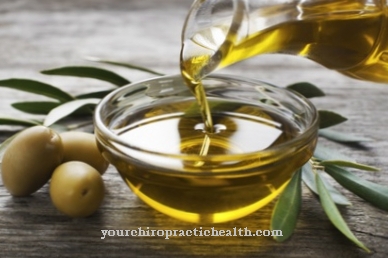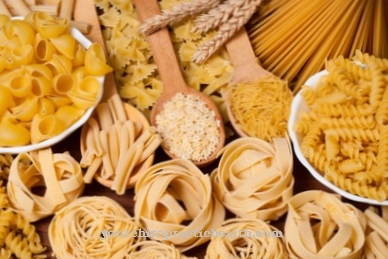Two families of salmon roam the oceans and rivers - the Atlantic and the Pacific salmon. If salmon runs through your mind, it's most likely the one atlantic salmon - he was at home in Germany for a long time and originally at home in the Elbe, the Rhine and other rivers. The Pacific kinship comes from a completely different area of the world's oceans, and is clearly different from the Atlantic salmon.
What you should know about Atlantic salmon

During its growth phase, the Atlantic salmon has a conspicuously greenish-gray back, silvery shiny sides with dark spots and a light belly.
It can weigh up to 30 kg and be up to 1.50 m long. Before he embarks on the journey as an anadromous hiker, he prefers the coastal waters of the Atlantic, because to spawn the salmon migrate back to the freshwater rivers in which they hatched. During this journey, the body gradually turns into gorgeous reds and yellows. This peculiar way of life brings with it a hike full of obstacles that can take up to a year. Rapids, waterfalls and dams are the many obstacles that have to be overcome.
If these barriers are not too high, a salmon can overcome them with huge leaps and its powerful tail flaps, because it manages to jump 3-5 meters high. For a long time, however, salmon stairs and ladders have been built at weirs and dams so that too many salmon do not die during their migration, because their strength dwindles because they do not find any food during the entire return journey, which can take up to a year take and only feed on their fat reserves.
Just in time for the spawning season, from the beginning of November to the beginning of March, they have arrived in their home waters, exactly where they were raised. They were guided by a puzzling sense of direction and the females now lay thousands of eggs, around 6 millimeters in size, which are immediately fertilized by several males. The larvae hatch after one to four months and it now takes about five years for them to start migrating downstream towards the sea.
It will take another one to three years until they are fattened with crabs and small fish, become adults and fertile, and then start the long journey to their place of birth again. On this spawning migration, the salmon are caught in the rivers using herrings as bait, and longlines and gill nets are usually used at sea.
Because the popularity of the Atlantic salmon as a food fish has increased significantly, stocks are dwindling and only 5,000 tons of Atlantic salmon are allowed to be fished per year.
Norway is home to the world's largest wild salmon stocks, and yet breeding in huge farms is one of the most important industries there, as is Scotland, Ireland, the Faroe Islands, Canada and the USA. This type of salmon farming is a major threat to wild salmon populations. Farmed salmon are fed with fish meal and fish, which inevitably leads to overfishing. One way out is farmed salmon with the “organic seal”, because the feed for these salmon comes exclusively from catches that are only used for food production.
The use of antibiotics, chemicals, genetically modified organisms and growth regulators is also prohibited. There is also a certificate for salmon caught in the sea. The MSC (Marine Stewardship Council) has been certifying fisheries that fish sustainably since 2001.
The Atlantic salmon has a very tender meat and a distinctive and strongly spicy taste. Atlantic salmon from the farm is fatter and has a rather sweet, tart taste. Since Atlantic salmon is mainly offered as farmed fish, it can be obtained in consistent quality throughout the year. The Atlantic wild salmon has its main season in autumn.
Importance to health
In addition to its extraordinarily good taste, Atlantic salmon also has a lot to offer for your health. It is one of the best sources of omega-3 fatty acids. However, it is essential to ensure that only Atlantic salmon with the "organic seal" or the MSC (Marine Stewardship Council) certificate is consumed, otherwise it now contains too many harmful substances that are harmful to health.
Regular consumption of Atlantic salmon provides the body with important nutrients and proteins, which significantly lowers the risk of a heart attack. For older people, its consumption is particularly beneficial for building muscle mass, because this breaks down quickly in this phase of life and the valuable proteins of Atlantic salmon can counteract this. Atlantic salmon is also perfect for young people in the development and growth phase. Its valuable ingredients and nutrients promote healthy growth and stimulate brain activity.
The Atlantic salmon is naturally rich in protein, omega-3 fatty acids and antioxidant elements. These valuable contents allow the skin to age more slowly and help keep it healthy.
Ingredients & nutritional values
From a nutritional point of view, the consumption of Atlantic salmon is an important source of essential fatty acids and high quality protein due to its high content of long-chain omega-3 fatty acids, 1.0 to 1.8 grams per 100 grams of fish. Other valuable nutrients in Atlantic salmon are B vitamins, vitamin A, vitamin D and the trace element iodine, which is part of the thyroid hormones.
Intolerances & allergies
For some people, however, consuming Atlantic salmon can be harmful. Because if you are allergic to fish, eating it can trigger severe to dangerous reactions. You may experience rashes, vomiting, diarrhea, nausea, or difficulty breathing. Oral allergy syndromes show up as blisters in the mouth, lip swelling, or itching in the throat.
Shopping & kitchen tips
Ideally, Atlantic salmon should be consumed on the day of shopping. If this is not possible, it can also be stored in the refrigerator for a day. To do this, it must not remain in its packaging, but should be transferred to a neutral container and covered with foil and ice.
A fresh salmon can be easily recognized, it has clear and plump eyes, its skin is shiny and the scales are tight and smooth. Its smell must be pleasant and should not have a strong fishy odor. A finger pressure point must disappear after a very short time. In the case of the salmon fillet, the individual muscle elements must not gape apart.
Preparation tips
Many types of delicious dishes can be prepared from Atlantic salmon. Whether fried, baked, poached, cold or hot smoked, grilled on the skin side or prepared as the popular gravlax - it is always a treat. It also goes well with many types of vegetables. A salmon tarte flambée with a thin crunchy base, a juicy topping with sour cream, salmon and leek is a perfect pleasure.













.jpg)

.jpg)
.jpg)











.jpg)